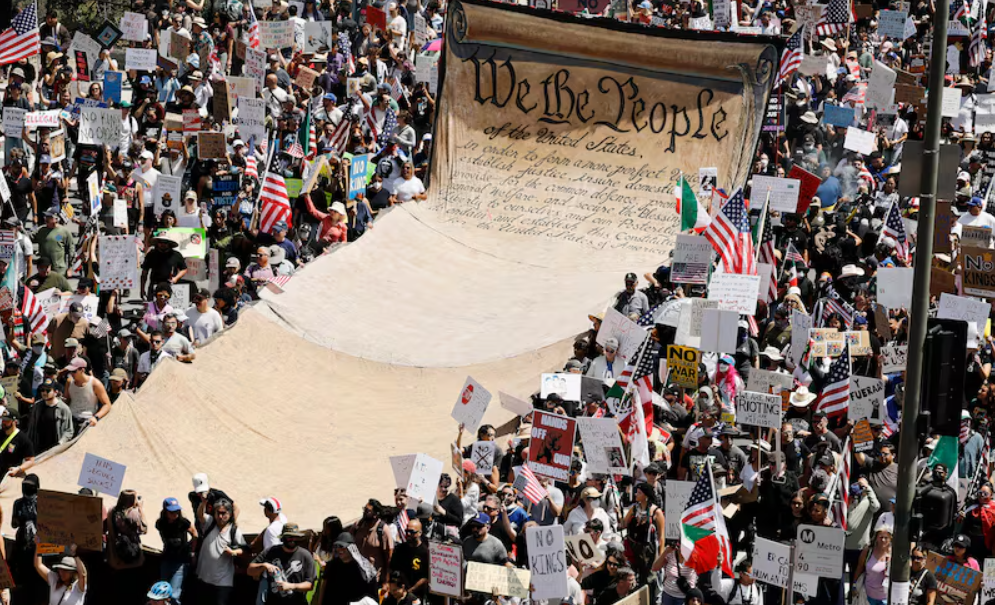Former President Trump hailed Saturday’s military parade on Constitution Avenue as a major win. Yet, with sparse crowds, logistical missteps, and nationwide backlash branded a “flop,” the event may leave more questions than answers.

Trump Declares Controversial Military Parade a Victory
| Takeaway | Stat & Source |
|---|---|
| Most Americans viewed it as poor fiscal stewardship | 60% said it wasn’t a good use of money; only 40% approved |
| Nationwide pushback grew massive | Over 5 million “No Kings” protesters in ~2,000 cities |
| Event cost became a flashpoint | Estimated between $25–$45 million |
Trump may call it a “victory,” but the parade’s muted turnout, hefty price tag, and massive protests suggest it was anything but triumphant. It stood at a crossroads: a tribute to service or a performative campaign stunt?
What Happened, and Why It Mattered
The spectacle
- Held June 14 in downtown D.C., marking the U.S. Army’s 250th anniversary and Trump’s 79th birthday, the parade featured 6,600 troops, 150 vehicles (including Abrams tanks), and 50 helicopters.
- Marching began at 6 p.m., slightly earlier than planned due to rain.
The reception
- Despite grand expectations, the parade drew modest crowds—far below the predicted 200,000—leading critics to deem it “underwhelming” and “lame”.
- Social media buzzed with mockery: one user quipped that the soldiers looked like “prisoners of war”.
- Photos of half-empty stands drew derision, including from Hillary Clinton, who contrasted vacancy with vast “No Kings” rallies.

The cost and politics
- Budget estimates ranged from $25 to $45 million—prompting criticism over waste, especially amid broader federal spending cuts.
- AP‑NORC polling indicated 60% believed it was a poor fiscal use, notably among Democrats and independents.
The unrest
- Concurrently, the “No Kings” protests erupted across the country, with some 5 million participants castigating Trump’s militarized messaging.
- The parade was part of a broader “Strongman Week,” including deployments to suppress ICE protests and partisan speeches at Fort Bragg—a pattern raising alarms over civilian control of the military.
The verdict
- Critics warn the parade echoed authoritarian displays seen in Moscow or Pyongyang and blurred democratic lines.
- Defenders argue it celebrated military service, honored veterans, and boosted recruitment.
A Personal Take
As a journalist with two decades covering D.C. events, I saw firsthand how messaging slipped between tribute and political theater. While many veterans saw the ceremony’s educative elements—highlighting eras from Revolutionary uniforms to drone units—it was hard to shake the sense that this was about Trump’s stature more than service.
FAQs
Why did critics say it ‘politicized’ the military?
Trump’s deployment of National Guard and Marines to quell ICE protests and partisan rallying at Fort Bragg framed the parade as part of a broader political operation .
Was the cost justified by turnout or outcomes?
Not by many measures. With majority opposition and lower-than-expected attendance, polling suggests most viewed it as poor spending .
Did veterans support the parade?
Opinions were split. Some veterans praised the salute to service; others refused to participate, seeing it as tainted by partisan motives.
Could this boost military recruitment?
It’s debatable. While organizers hoped the showcase would attract new recruits, public mood and optics might undercut that aim.






